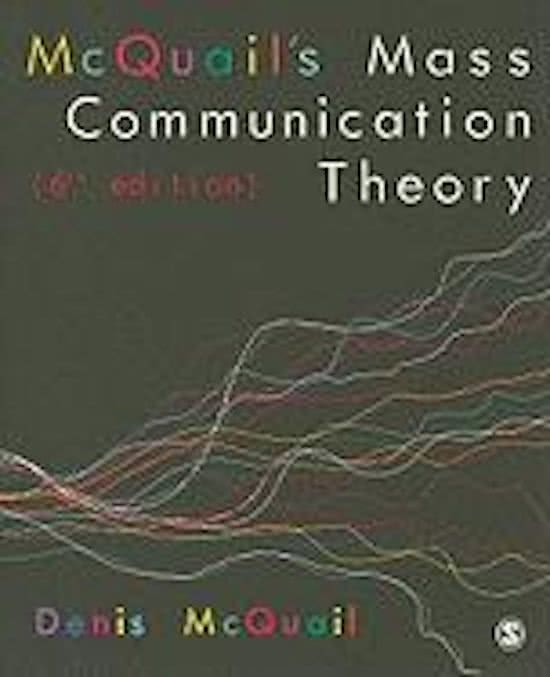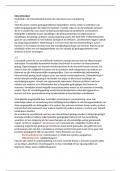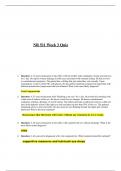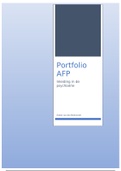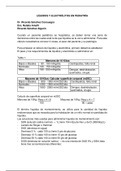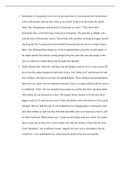Hoorcollege 3 – 20-09-2017
Chapter 3 – continued
The “mass” concept:
The mass audience was something that they were afraid of fear of revolutions etc.
Social contract between rulers and citizens citizens also have power.
Tool for rulers to handle this fickle.
We have to have defences, otherwise you would be distracted all the time, you need to
filter.
Is there really a thing like a mass culture or is it artificial?
Mass communication: large scale, one-directional, asymmetrical relationship between the
sender and the receiver (sender has more power). Calculative relationship, standardization
of content (the porridge (pap in Nederlands) effect).
Herbert Blumer: distinguishes between the mass and the groups within the mass audience.
Group features:
- Smaller scale
- Membership is semi voluntary
- Long term relationship (or at least longer than the mass)
- Based on emotions and sense of belonging
- Semi organized (people have informal roles)
- Hierarchy
- (unwritten) rules and conventions
- More power in media relations two-step flow: bijv. Your parents follow the news
and translate it to you when you were younger. Critical towards the media.
Four models of Communication: earliest models were linear. Each model differs from
orientation and relationship between the sender and receiver.
1. Transmission model: there is a sender, who sends a message and the message is
received by the receiver (basic model of communication). Different channels,
different characteristics Noise can happen. Message is not received by the
receiver when noise has occurred.
Linear: because the only way it is correct communication when the receiver decodes
the message in the way the sender meant it. This is not a very realistic approach,
because the receivers have a very different background and they would interpret the
message differently.
2. Expressive/ritual model: communication is constantly aanpassen aan de omgeving.
You create your own reality. Not focused on one-way communication circulation.
You have to reaffirm your connection with other people. Super popular model among
socialists. Symmetrical model: communication is sending but also receiving. It is ritual
because communication must be done over and over again. True meaning is in the
ritual not in the content. Communication itself is the meaning (and the message).
Communication between two parties that are equal.
, 3. Publicity model: communication as an economical force. Popular model among
different groups of scholars. How can I get more people to hear what I say? Similar to
transmission model because of the asymmetrical communication. Publicity model is
just interested in creating/gaining a large audience. Measure success of a campaign.
Main focus on gaining a large hearing (there is no bad publicity). Economically driven
perspective. A large audience makes a medium attractive for advertisers.
4. Reception model: Similar to ritual model, more focus on how and why people give
meaning to a message + focus on the receiver of the message. Which part of the
message is deconstructed universally and which part is individually? Born from ritual
model but goes in its own direction, very different focus. Leaves room for
interpretation.
The Four models compared:
Chapter 3 – continued
The “mass” concept:
The mass audience was something that they were afraid of fear of revolutions etc.
Social contract between rulers and citizens citizens also have power.
Tool for rulers to handle this fickle.
We have to have defences, otherwise you would be distracted all the time, you need to
filter.
Is there really a thing like a mass culture or is it artificial?
Mass communication: large scale, one-directional, asymmetrical relationship between the
sender and the receiver (sender has more power). Calculative relationship, standardization
of content (the porridge (pap in Nederlands) effect).
Herbert Blumer: distinguishes between the mass and the groups within the mass audience.
Group features:
- Smaller scale
- Membership is semi voluntary
- Long term relationship (or at least longer than the mass)
- Based on emotions and sense of belonging
- Semi organized (people have informal roles)
- Hierarchy
- (unwritten) rules and conventions
- More power in media relations two-step flow: bijv. Your parents follow the news
and translate it to you when you were younger. Critical towards the media.
Four models of Communication: earliest models were linear. Each model differs from
orientation and relationship between the sender and receiver.
1. Transmission model: there is a sender, who sends a message and the message is
received by the receiver (basic model of communication). Different channels,
different characteristics Noise can happen. Message is not received by the
receiver when noise has occurred.
Linear: because the only way it is correct communication when the receiver decodes
the message in the way the sender meant it. This is not a very realistic approach,
because the receivers have a very different background and they would interpret the
message differently.
2. Expressive/ritual model: communication is constantly aanpassen aan de omgeving.
You create your own reality. Not focused on one-way communication circulation.
You have to reaffirm your connection with other people. Super popular model among
socialists. Symmetrical model: communication is sending but also receiving. It is ritual
because communication must be done over and over again. True meaning is in the
ritual not in the content. Communication itself is the meaning (and the message).
Communication between two parties that are equal.
, 3. Publicity model: communication as an economical force. Popular model among
different groups of scholars. How can I get more people to hear what I say? Similar to
transmission model because of the asymmetrical communication. Publicity model is
just interested in creating/gaining a large audience. Measure success of a campaign.
Main focus on gaining a large hearing (there is no bad publicity). Economically driven
perspective. A large audience makes a medium attractive for advertisers.
4. Reception model: Similar to ritual model, more focus on how and why people give
meaning to a message + focus on the receiver of the message. Which part of the
message is deconstructed universally and which part is individually? Born from ritual
model but goes in its own direction, very different focus. Leaves room for
interpretation.
The Four models compared:

